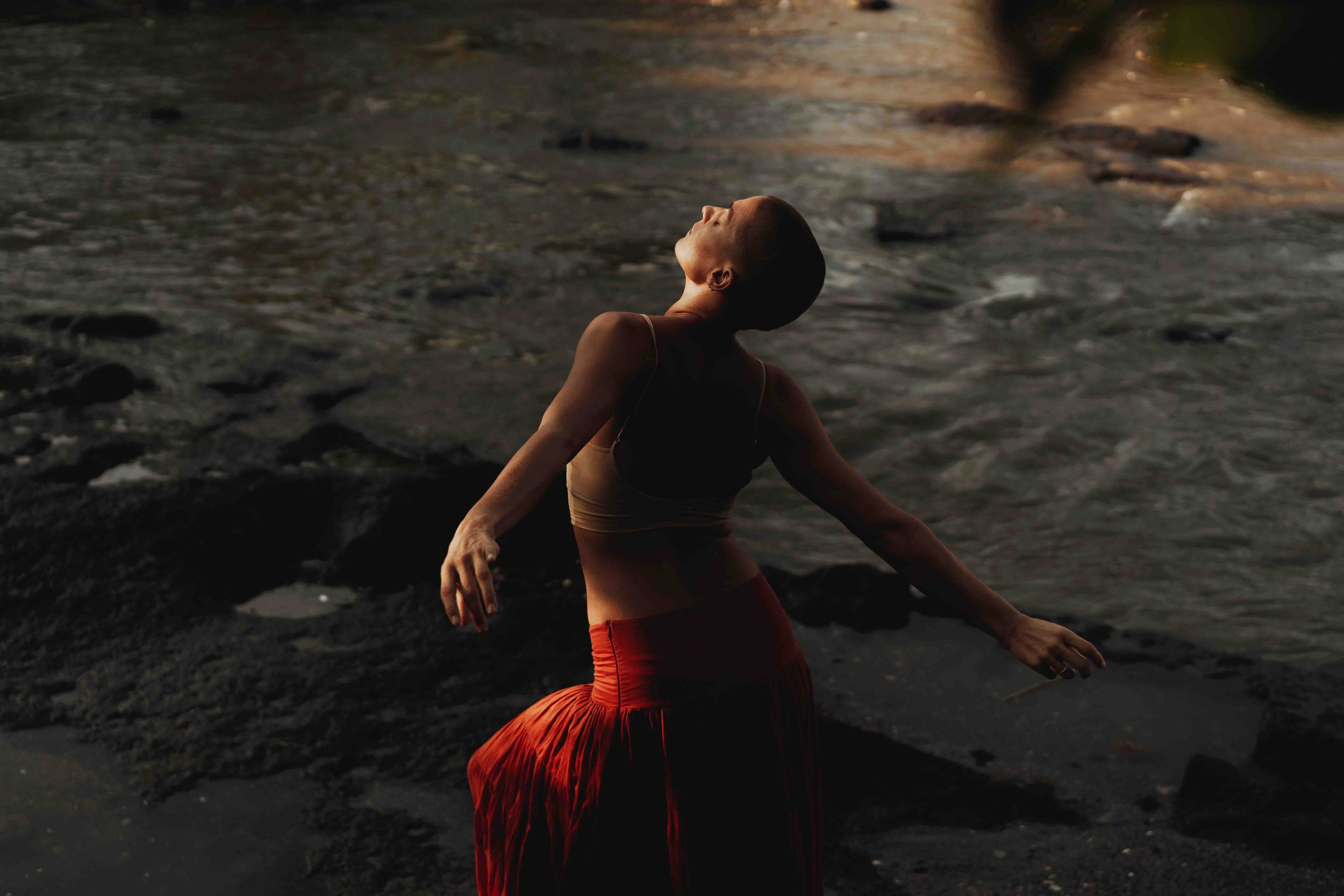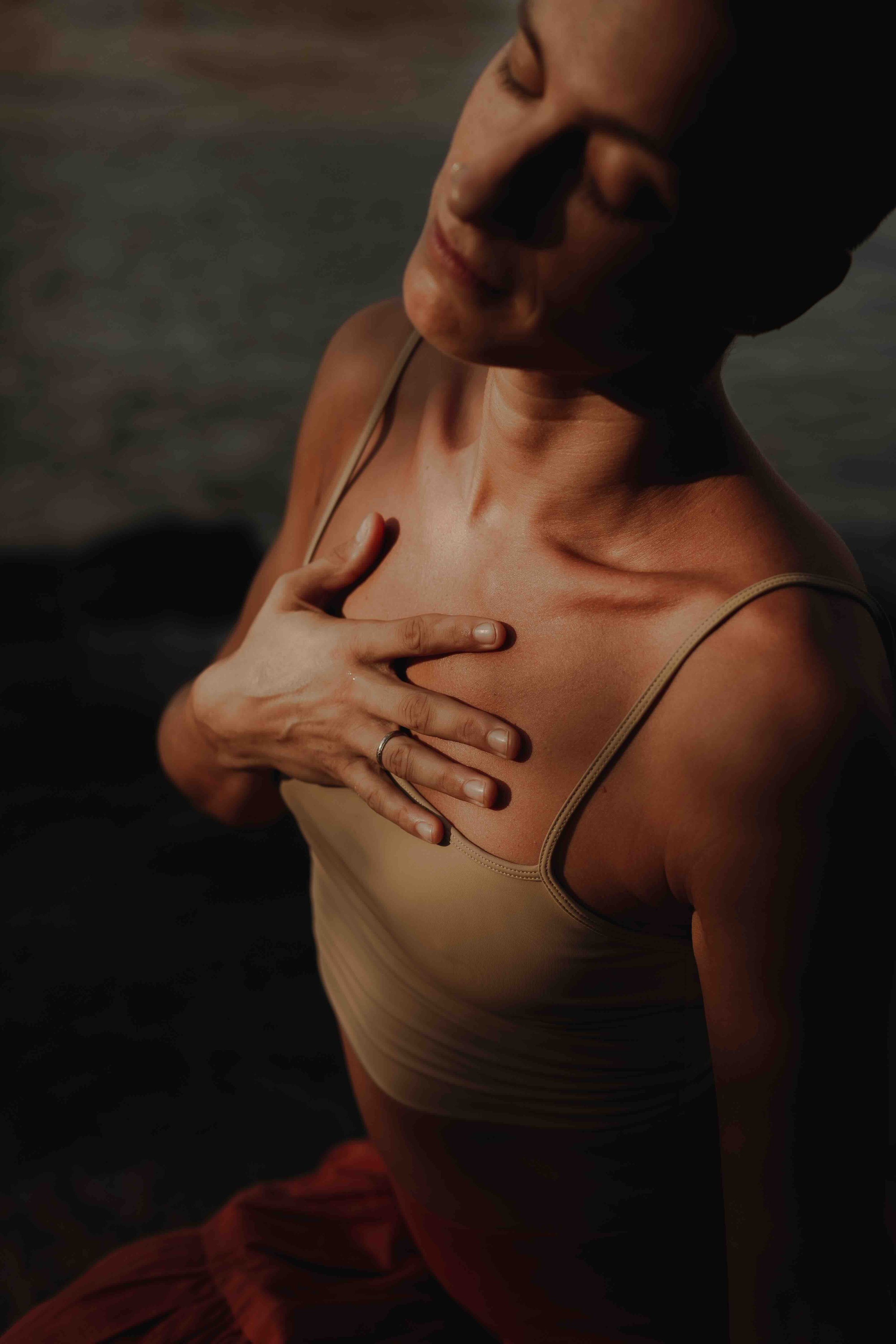What is Somatic Asana, and how do we practice it?
The flow of Somatic Asana.
What is Somatic Asana and how do we practice it?
What is Somatic Asana
Somatic Asana is the fluid experience of body moving through space and space moving through body. Asana, or modern postural yoga, can become devoid of awareness when it becomes regimented. If you’re contorting yourself into shapes or moving through poses but lost in thought, dissociated or disengaged, are you really practising yoga?
Yoga means cultivating awareness and connection to self, other and the environment. Practising for physical health, attaining flexibility, or trying to de-stress is great, but it’s missing something essential. It’s missing the yoga! That felt sense connection to presence.
Somatic Asana is a way to call awareness back into your movement practice, to allow yourself to fully inhabit body, shape and experience. It allows you to meet what is arising with grace, sensitivity and curiosity.
How to practice Somatic Asana
In Somatic Asana, it’s important to take some time to sense and feel into your body before beginning. This might mean calling in the energy of your heart, feeling your cells breathing moment by moment or sensing the gliding grace of your bones.
Once you're dropped into the embodied landscape of your body, you can begin moving from the inside out. This will allow the shapes you form with your limbs to emerge organically; you’re not forcing your body to move into poses but allowing the poses to ripple out of your body. You move with presence. You become yoga.
Facilitation style, approach and cueing are very important in Somatic Asana. The facilitator needs to be centred in their own body so that they are instructing and cueing from the felt sense. The transmission, the teaching, comes from something alive and tangible. Cues may be infused with poetry, they might use visualisation and the tone of the facilitator’s voice might inform how students move. In Somatic Asana, cues are typically invitational over instructional.
A ‘standard’ yoga class might tell you to step one foot to the back of the mat, align your inner mid heel with your top back heel, bend your knee 90 degrees and so on… Somatic Asana doesn’t focus on alignment like this. The alignment comes from meeting what is present, as it arises inside the shapes. You align to your experience. Somatic Asana poses are typically held softly for longer periods than in Vinyasa Flow, for example, so that there is more time to meet and stay with what is happening inside the shape.
Becoming the space between in somatic asana.
Sensing and Feeling as Embodied Yoga
As modern postural yoga has become more popular in the last few decades, an idea has formed that there is a ‘right’ way to move in, hold and exit a yoga pose. In some ways this is great; yoga has invented a universal somatic language that millions of practitioners can speak. This means that everyone who speaks that language (or rather, moves in that language) can hear the word Utkatasana and knows how to balance their feet, how much to bend their knees, how high to raise their arms and where to rest their gaze.
But the experience of the pose is not universal. Somatic Asana invites us to experience the pose from a sensing and feeling perspective. So whilst we may move into similar shapes, what is alive arises from the sensing and feeling field. This means that not only is every person’s Utkatasana distinct, unique and alive, but it also means that the experience shifts for every yogi each time they move into the shape. This is how you breathe life back into a movement form that can become devoid of intention and meaning if you are always moving through the shapes in the same way. Instead of focusing on gaining flexibility/strength/balance, you practice to meet what arises time after time.
The Energy of the Pose in Somatic Asana
Moving into asana in such a way can mean that we allow the poses to be expressed through our bodies. You might be curious as you practice, what is the energy of Virabhadrasana 1 versus Virabhadrasana 2? What chambers of the heart are invoked in Ustrasana versus Wild Thing? How does earth speak to you when you breathe yourself up through Bhujangasana versus how the earth steadies you in Tadasana? There is so much to be witnessed, felt and expressed through the archetypal energies of the pose when you allow yourself to practice from inside out.
Somatic Asana embraces this more intuitive approach to practice so that you are expressing deeper layers of your being as you grace yourself to the movement and to the moment. Somatic Asana invites you to go deeper; not in a physical way but deeper into your experience. You enhance the body-mind connection as you sense, feel and move. And ultimately, this is yoga. Deepening your connection to who you are and how you move through the world as expressions of the singular consciousness which we call the Divine.
Interested in exploring Somatic Asana? Here’s a free practice with Collette Davis.
You can also join her Somatic Asana classes every Friday throughout March 2025.
In somatic asana, the heart is a touchstone to self, presence and connection.


